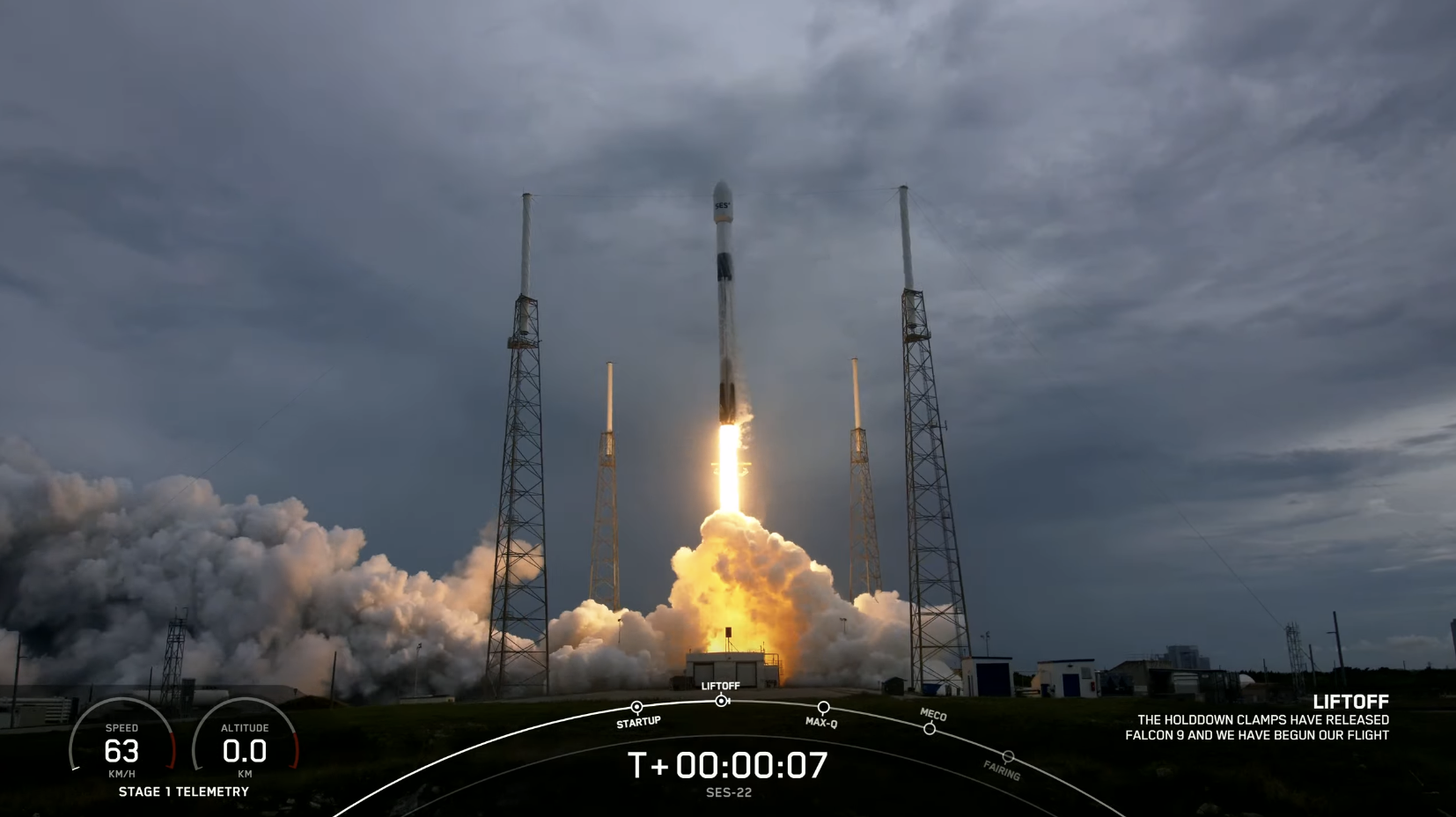
SpaceX has wrapped up a launch-heavy June with its fifth flight of the month, lofting a previously-used Falcon 9 booster from storied Space Launch Complex (SLC)-40 at Cape Canaveral Space Force Station, Fla., on Wednesday, carrying the SES-22 communications satellite towards Geostationary Transfer Orbit (GTO). Liftoff of the B1073 core—which entered service just last month with a 53-strong haul of Starlink low-orbiting internet communications satellites—took place at 5:04 p.m. EDT, right on the opening of a two-hour “window”. It marked the third back-to-back month in which SpaceX has staged at least five Falcon 9 missions.
SpaceX has a long relationship with Luxembourg-headquartered SES, which supports an ever-expanding fleet of over 70 powerful satellites in geostationary orbit for video and data connectivity, broadcasting and internet provision in support of government and other customers. Back in December 2013, the 7,000-pound (3,100-kilogram) SES-8 satellite—laden with Ku-band and Ka-band hardware to furnish bandwidth-growth capacity in the Asia-Pacific Region—marked SpaceX’s first-ever GTO-bound payload.
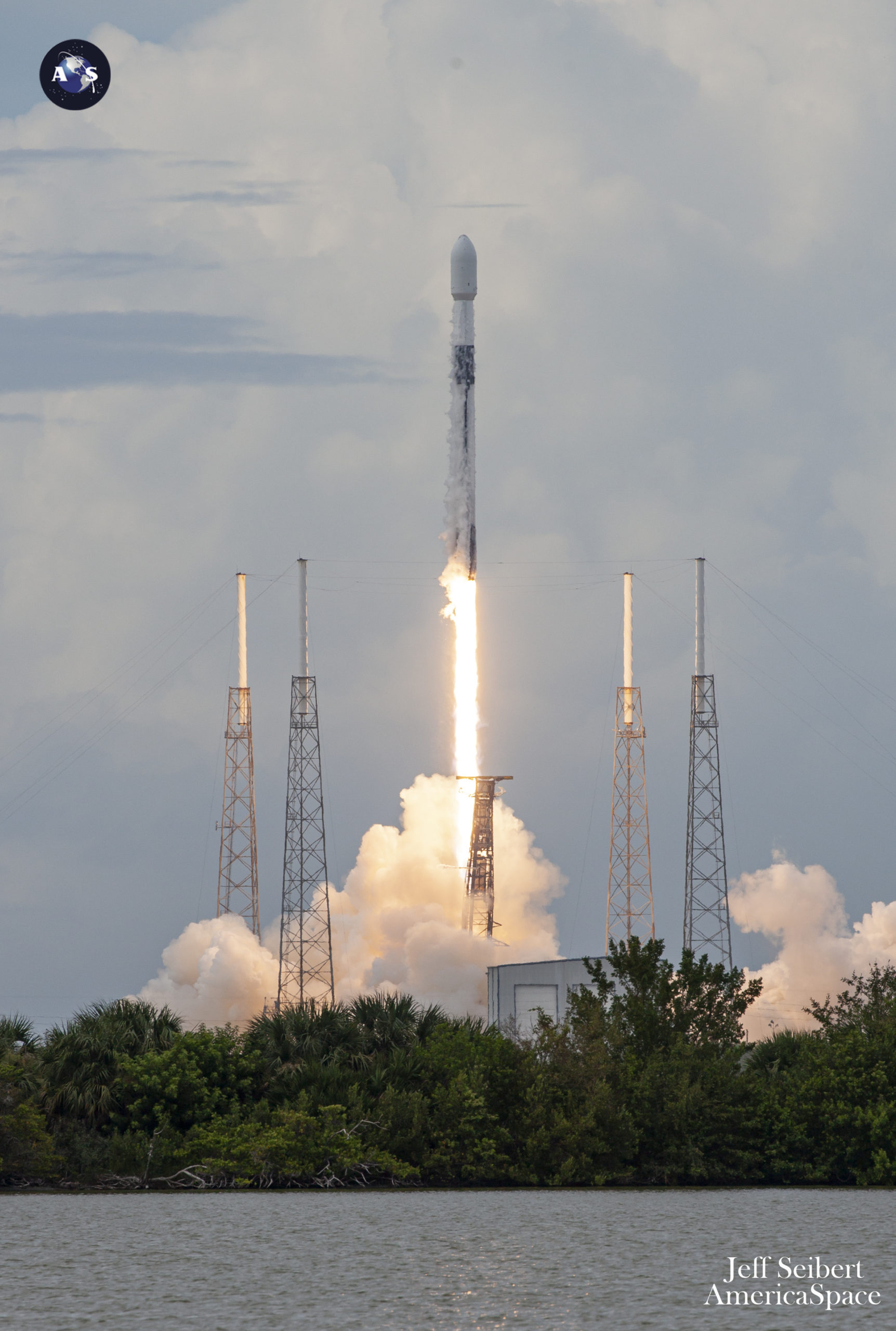
The Hawthorne, Calif.-based launch services provider next lifted SES-9 to orbit in March 2016, a satellite which marked SpaceX’s then-heaviest commercial payload, tipping the scales at more than 11,750 pounds (5,330 kilograms). But it was SES-10, launched in March 2017, which earned an indirect place in the annals of space history, rising to orbit atop the first “reflown” Falcon 9 core.
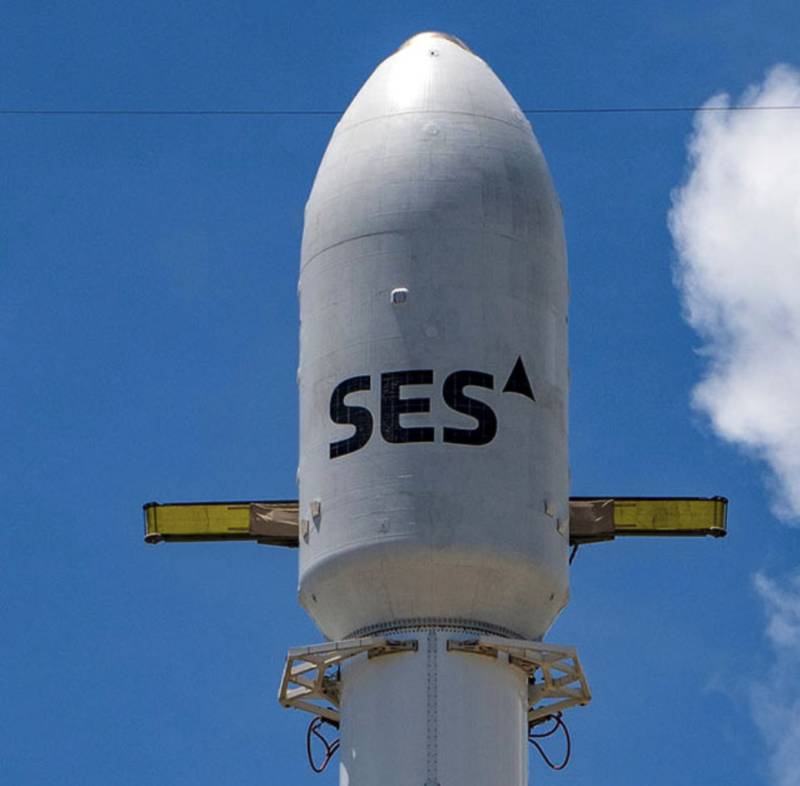
SES-11 followed suit on another reflown booster the following fall, with SES-16 doing likewise in January 2018—on the 60th anniversary of the launch of America’s first artificial satellite, Explorer-1—and most recently SES-12 in June 2018. All three missions rode atop once-before-used Falcon 9 cores. By pure happenstance, SES-22’s booster, B1073, was also making its second launch when it rose from the East Coast today.
And SES-22 forms just one component in a larger picture which presently should see multiple new satellites lofted over the next couple of years. With the development of 5G networks, U.S. wireless operators have required access to part of the C-band—the portion of the electromagnetic spectrum spanning 4-8 GHz—to provide services to their users.
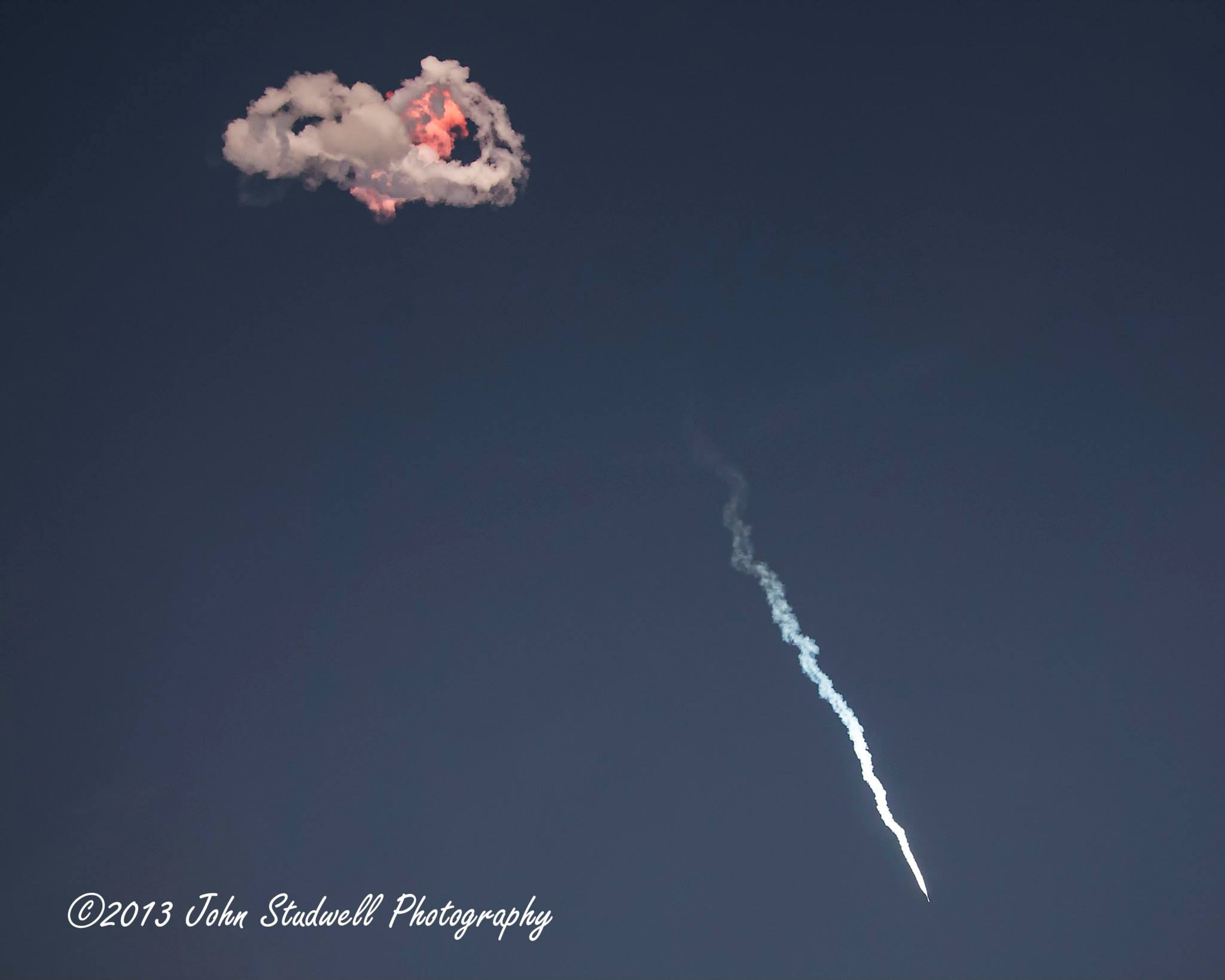
To achieve this, the Federal Communications Commission (FCC) has worked with satellite operators to develop a plan to clear 280 MHz of C-band spectrum for 5G mobile services. This will allow television and radio services, critical data transmission services and 5G networks to be delivered simultaneously.
To meet the FCC deadline of clearing C-band spectrum across the United States, SES ordered four new satellites—SES-18, SES-19, SES-20 and SES-21—to be delivered into orbit. In June 2020, Northrop Grumman Corp. was selected to build SES-18 and SES-19, leveraging its flight-proven GeoStar-3 “bus”, with Boeing chosen to build SES-20 and SES-21 on its all-electric 702SP satellite platform.
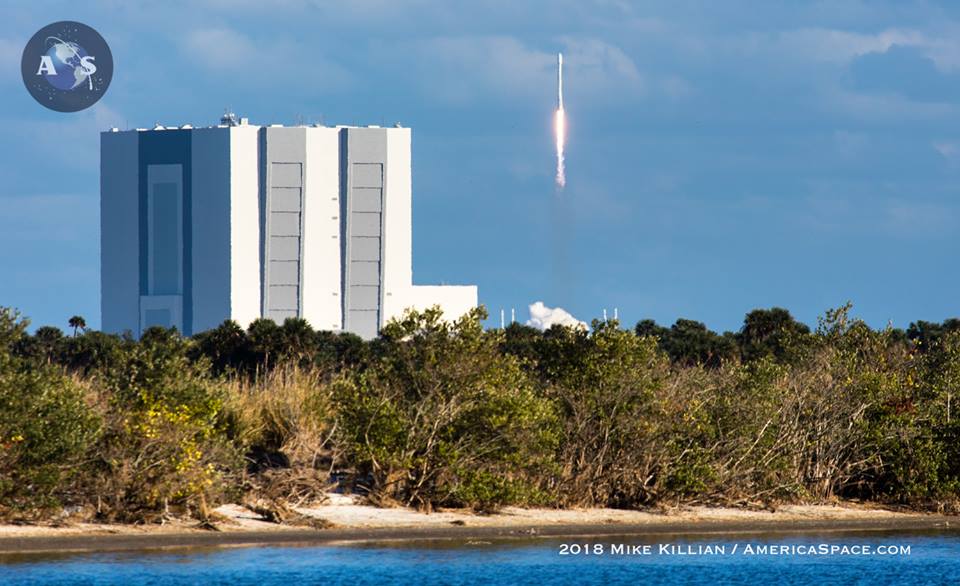
That same summer, SpaceX was picked to launch SES-18 and SES-19 and United Launch Alliance (ULA) won a contract to deliver SES-20 and SES-21. Current plans envisage SES-20 and SES-21—riding in a “stacked” configuration—to launch atop an Atlas V booster from Cape Canaveral Space Force Station, Fla., in August 2022, followed by SES-18 and SES-19 atop a Falcon 9 later this fall.
They will enable the broadcast delivery of digital television to nearly 120 million homes. In tandem with the SES-18 and SES-19 launch contract, it was noted that SpaceX would “provide enhanced protection to rapidly launch a contingency satellite” to enable SES “to meet the Federal Communications Commission’s time-critical objective to roll-out 5G services across the United States”.
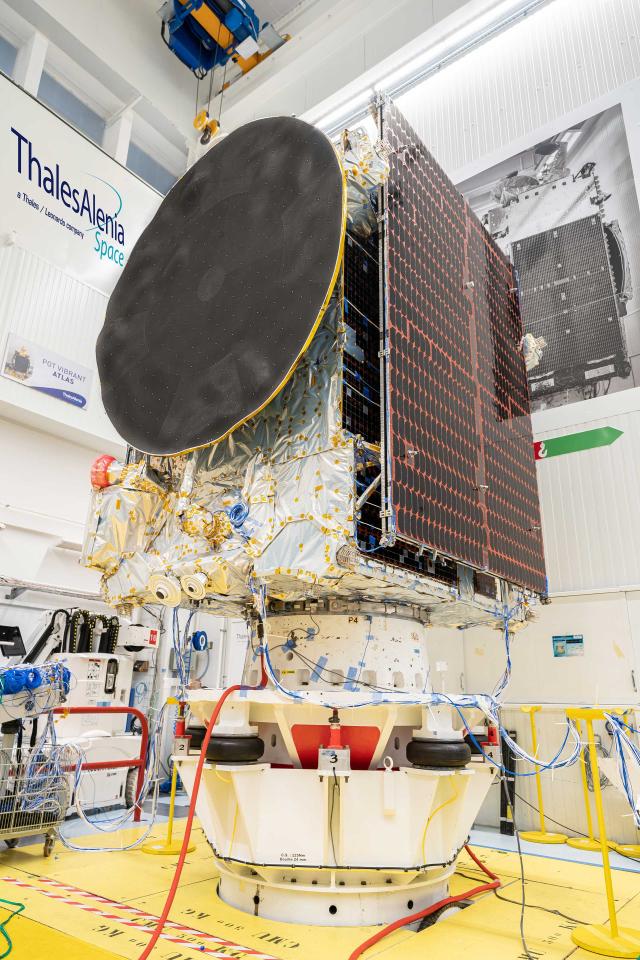
In support of these additional objectives, contracts to build SES-22 and 23 were awarded to Thales Alenia Space in August 2020. The two satellites are based upon the tried-and-true Spacebus 4000 B2 platform, weighing about 7,700 pounds (3,500 kilograms) and designed for a 15-year minimum operational lifetime.
After its initial on-orbit testing phase concludes in August, SES-22 will enter service at 135 degrees West longitude. Construction of SES-23 began in June 2021, with an expectation that it will serve as a ground-based spare, for possible future completion and call-up into service.
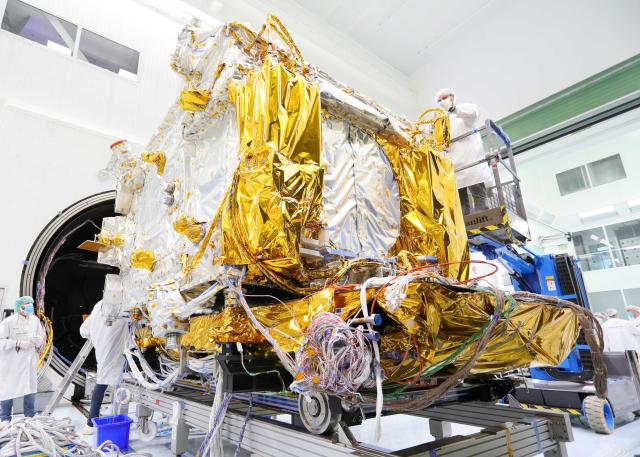
“The robustness and flight-proven heritage of our Spacebus 4000 B2 platform, combined with our ability to timely and quickly deliver SES-22 and SES-23, have been key elements leading to the decision of SES working with us to replace its existing C-band fleet,” said Hervé Derrey, President and Chief Executive Officer of Thales Alenia Space. “This demonstrates Thales Alenia Space’s expertise in developing tailored solutions that meet each operator’s specific needs to clear the C-band spectrum.”
After completing its final integration phase at Thales Alenia Space’s facility in Cannes, France, SES-22 was shipped to Florida last month and unloaded at Port Canaveral on 14 May. It then underwent several weeks of tests and fueling, ahead of integration into its Falcon 9 payload fairing for launch.
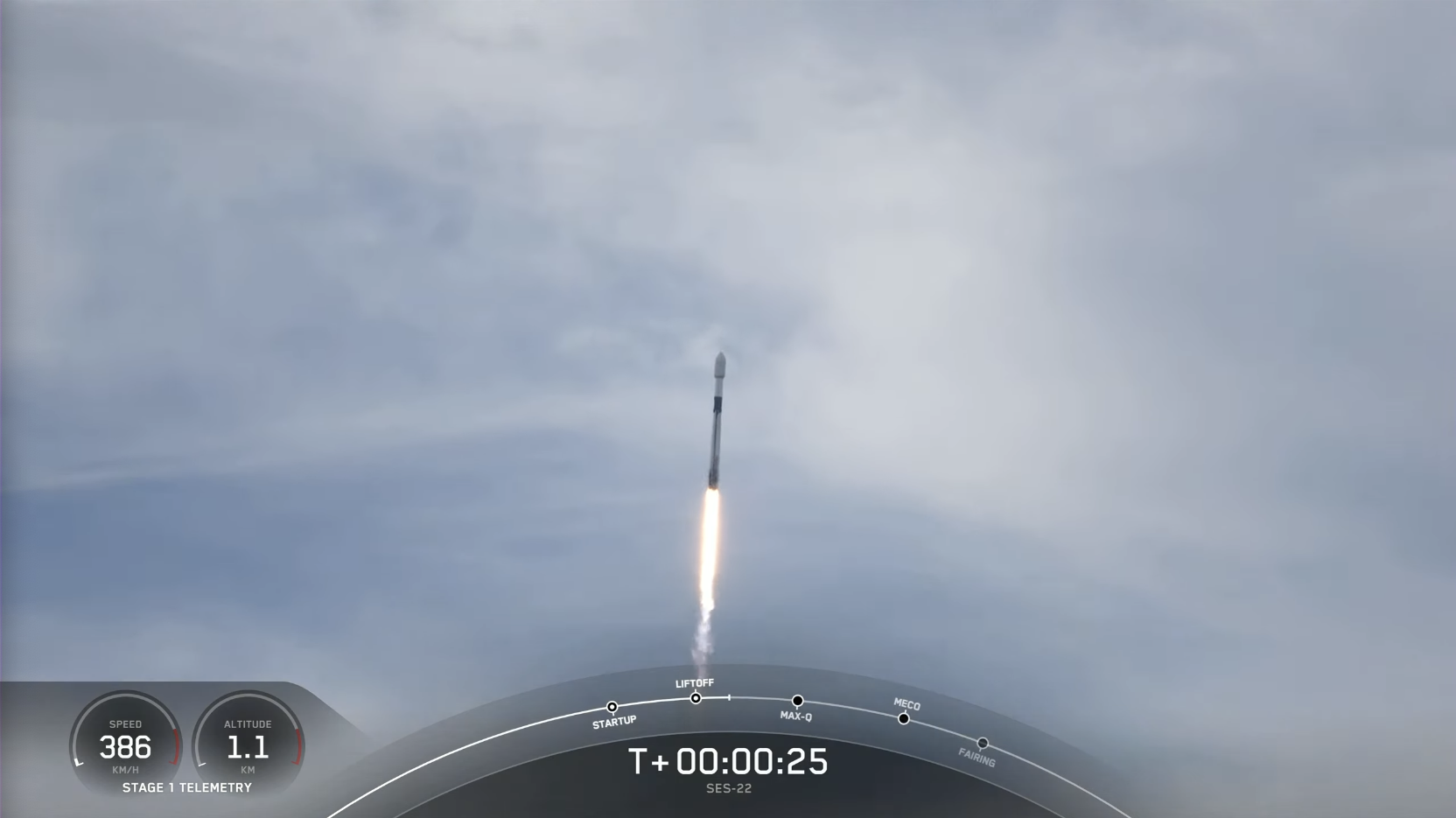
Interestingly, the booster that lofted SES-22 tonight completed the first mission of her own career on the very day that SES-22 reached the Space Coast. Launched on 14 May, B1073 marked only the second “new” booster to be introduced into SpaceX’s fleet thus far in 2022.
Her first flight successfully lifted 53 Starlink internet communications satellites into low-Earth orbit, inclined 53.2 degrees to the equator. That mission concluded with B1073 touching down on the deck of the Autonomous Spaceport Drone Ship (ASDS), “Just Read the Instructions”. She returned to port a few days later to begin readiness for her second launch with SES-22.
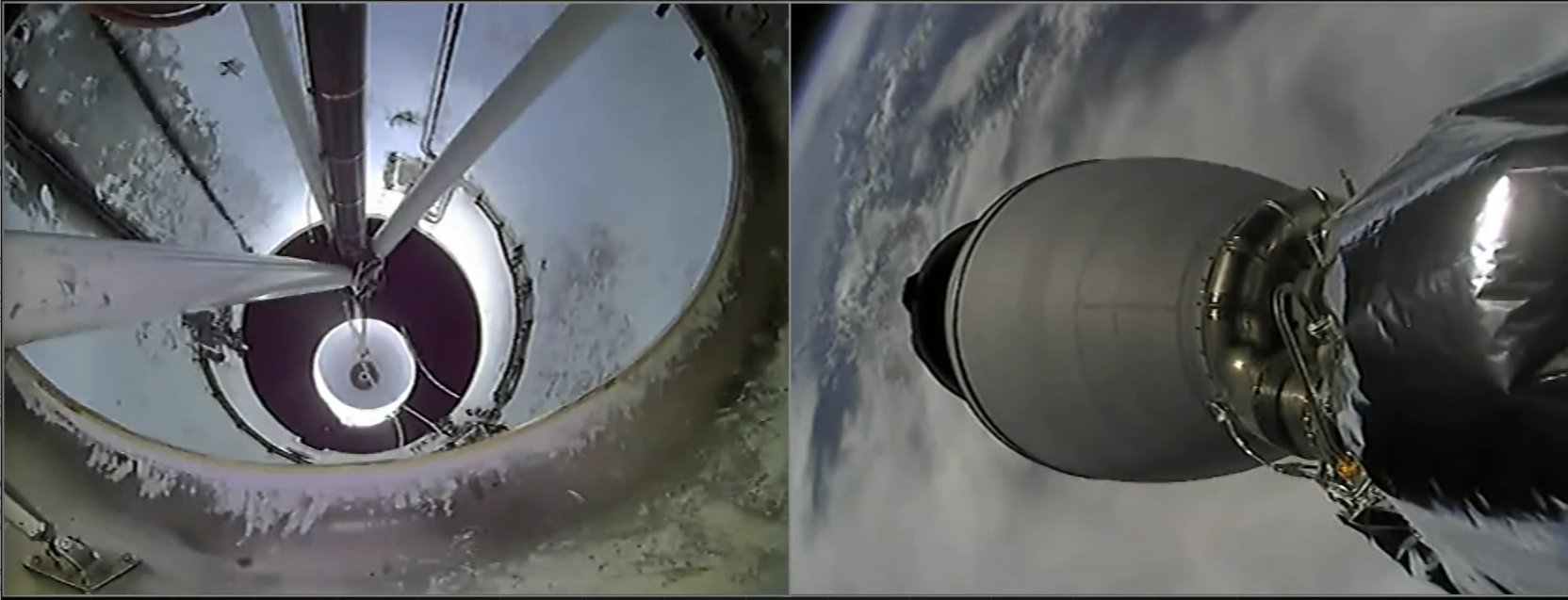
Last Saturday, the second East Coast drone ship, “A Shortfall of Gravitas”, put to sea from Port Canaveral, heading for a position about 414 miles (667 kilometers) offshore in the Atlantic Ocean. And with the ASDS in place, B1073 smoothly took flight at 5:04 p.m. EDT Wednesday, right on the opening of tonight’s two-hour “window”.
The core’s nine Merlin 1D+ engines powered the 230-foot-tall (70-meter) stack uphill for the first 2.5 minutes, before separating and returning smoothly to the deck of the drone ship. Meanwhile, the Merlin 1D+ Vacuum engine of the Falcon 9’s second stage executed a pair of “burns”: one lasting a little less than six minutes, followed by a lengthy period of coasting, ahead of a shorter second firing at 27 minutes into the flight. This served to position SES-22 for deployment at 33.5 minutes after launch.
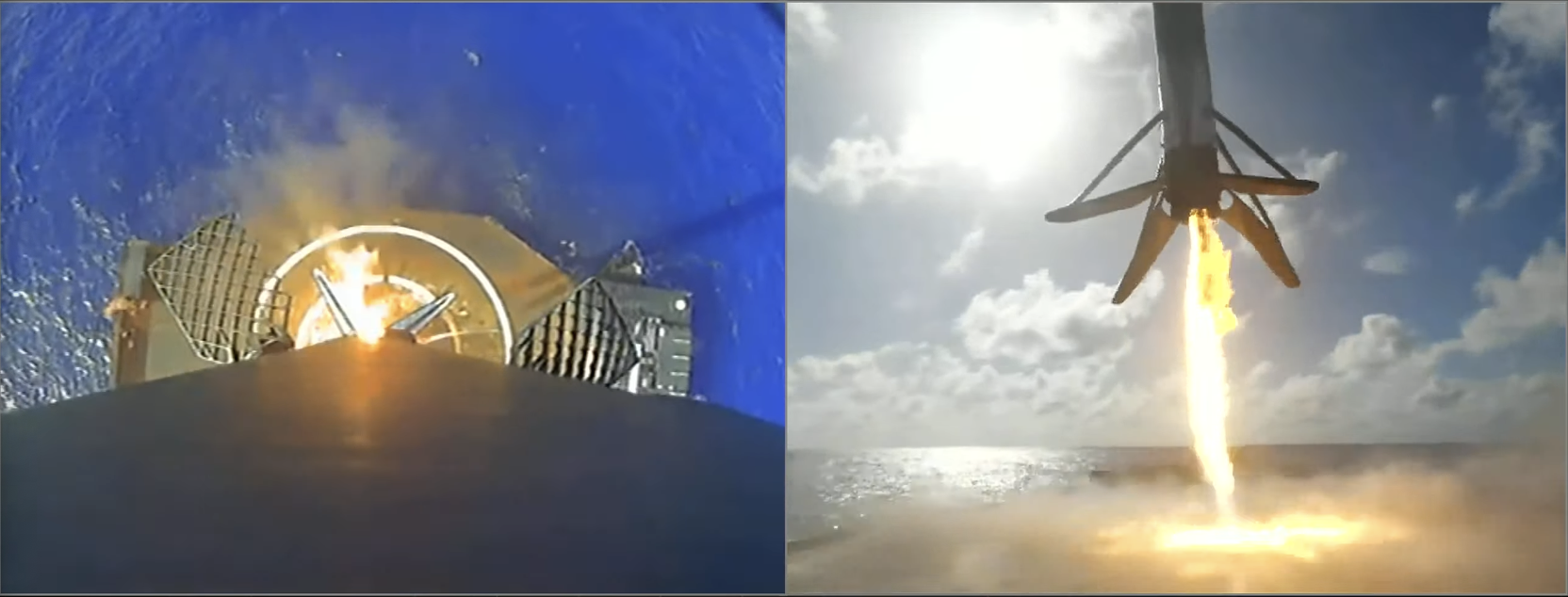
As the first half of 2022 wraps up, SpaceX has flown 27 Falcon 9 missions in the year’s first 26 weeks. Those 27 missions have been executed using only ten boosters, two of which only entered service this year.
And we have seen the first Falcon 9s to fly 12th and 13th missions, as SpaceX continues to push its booster reuse capabilities. One booster re-entered service after a past life as a side-booster on not one, but two Falcon Heavy missions, before being reconfigured into a “single-stick” Falcon 9 and going on to log three missions so far in 2022.
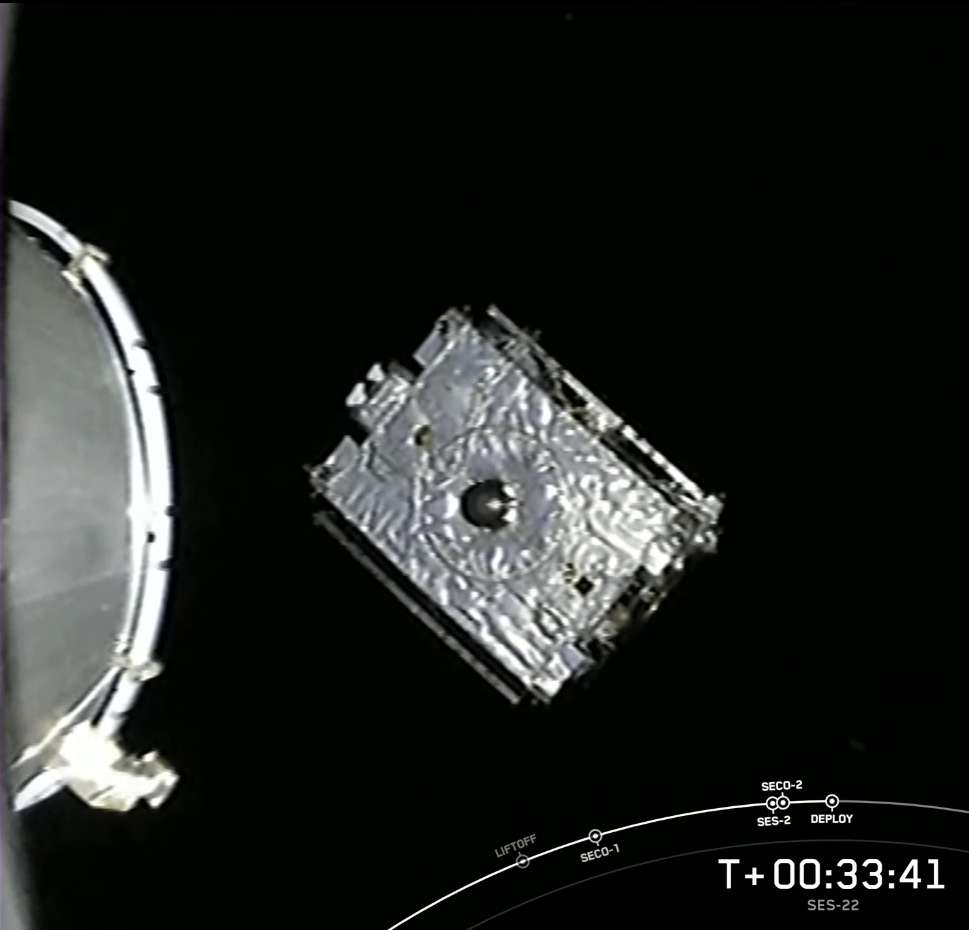
Three other boosters have recorded four launches apiece since January. All told, they have delivered more than 700 Starlink satellites to orbit, as well as three multi-payload Transporter rideshare missions.
Other cargoes have included a pair of highly classified National Reconnaissance Office (NRO) customers and eight humans—Ax-1’s Mike Lopez-Alegria, Larry Connor, Eytan Stibbe and Mark Pathy and Crew-4’s Kjell Lindgren, Bob “Farmer” Hines, Jessica Watkins and Samantha Cristoforetti—who rode Dragon Endeavour and Dragon Freedom to the International Space Station (ISS). And with tonight’s flight of SES-22, SpaceX has lifted its second mission of the year to Geostationary Transfer Orbit (GTO), following the Nilesat-301 launch earlier in June.




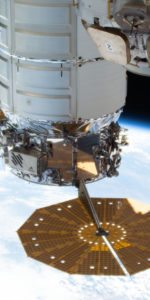
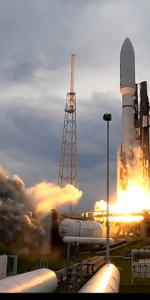
6 Comments
6 Pings & Trackbacks
Pingback:Mighty Atlas Launches USSF-12 Mission for Space Force, Department of Defense - AmericaSpace
Pingback:SpaceX Resumes Vandenberg Launches, Looks Ahead to Record-Breaking 2022 - AmericaSpace
Pingback:SpaceX Flies 3,000th Starlink in Evening Falcon 9 Launch - AmericaSpace
Pingback:SpaceX Launches Eutelsat 10B, Expends Long-Serving Falcon 9 Booster - AmericaSpace
Pingback:SpaceX Lofts Moon Lander, Rover, Ice-Seeker, Approaches 60-Launch Year - AmericaSpace
Pingback:SpaceX Lofts Moon Lander, Rover, Ice-Seeker, Approaches 60-Launch Year - Space News